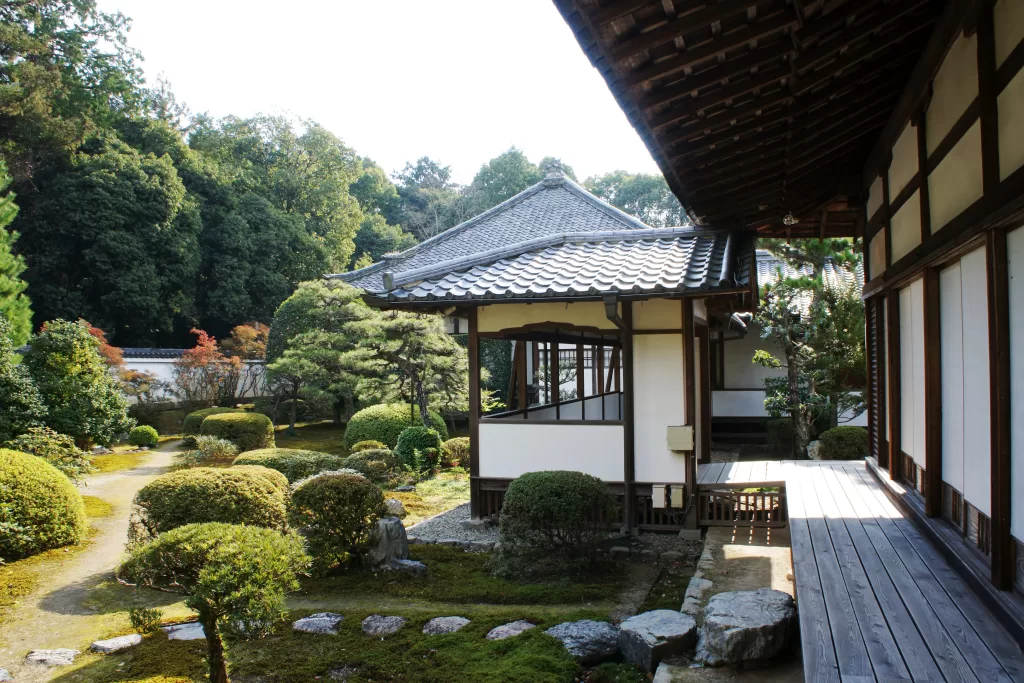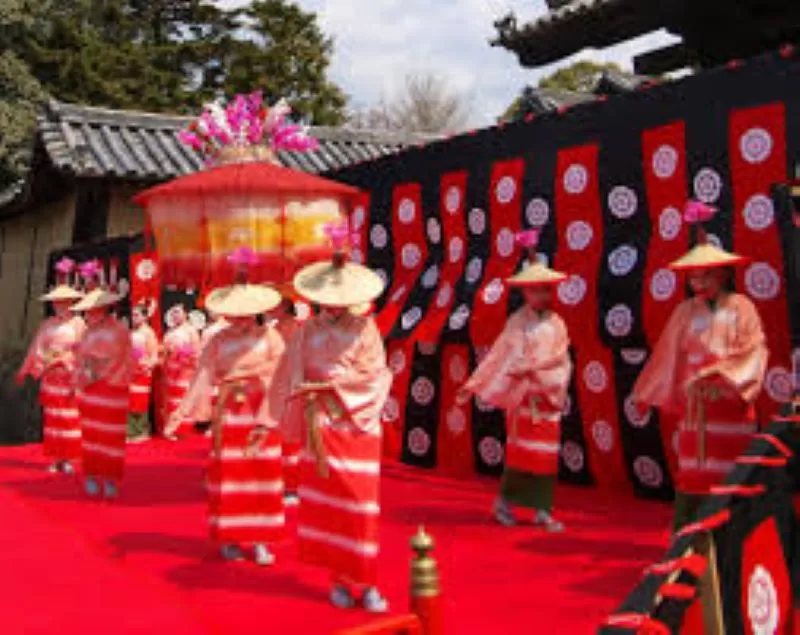Hanezu Odori Celebrates the Arrival of Spring in Kyoto

Every year, the last Sunday of March marks a unique celebration at Zuishin-in Temple located just 20 minutes away from Kyoto Station. The festival centers around Hanezu Odori, an age-old traditional dance inspired by the love story of Ono no Komachi and Fukakusa no Shosho.

The Tale Behind Hanezu Odori
The name “Hanezu Odori” stems from the old Japanese word “hanezu,” which means pale pink. Symbolizing the plum tree blossoms which bloom vibrantly during this time, performers adorn pale pink costumes, accompanied by bamboo hats embellished with plum flowers. It’s one of the most awaited Kyoto events in March.
Young girls play the roles of Komachi and Shosho in a story of love and despair, dancing to a children’s song that recites their tragic romance. This cultural tradition was brought back to life four decades ago following World War II disturbances and has since reclaimed its popularity. Performances occur four times throughout the day.
Beat the Crowd
A unique feature of this event is that visitors can watch up close! However, seats do fill up fast near the stage where Hanezu Odori is performed. Hence, it’s recommended for spectators to arrive early to secure front-row seating.
Following Act: Imayo Song Offering
A stark contrast to Hanezu Odori follows—a Heian period (794-1185) inspired dance known as “Imayo”. Unlike its predecessor, Imayo dancers dress in white and perform a solemn interpretation of this popular Heian period song.
Ono Plum Garden in Full Bloom
March is also when one would witness the full bloom of 200 plum trees at the Ono Plum Garden within Zuishin-in Temple—Kyoto’s prime location for viewing plum blossoms. These late-blooming “Hanezu plums” often peak in mid-March., The mesmerising scent and the beautiful sight make for an enjoyable stroll through the garden.
Delighting the Palate
Additionally, visitors can purchase “Hanezu uiro,” a sweet delicacy packaged in a bamboo container for 200 yen. Uiro is made from brown sugar and agar-agar and has natural sweetness that complements well with its cute bamboo container packaging—making it an ideal souvenir.
Conclusion
Zuishin-in Temple’s annual celebration of Hanezu Odori brings Japan’s rich culture to life. It not only honors Ono no Komachi, who was celebrated across Japan for her beauty but also celebrates springtime—the blossoming plum trees serving as a vivid backdrop for these well-loved traditions.
Moreover, guests get to immerse themselves in this event—whether it is relishing locally made sweets, enjoying traditional songs and dances up close or leisurely walking amidst blooming plum trees.
The proceedings that mark this festival reflect two contrasting sides of Japan’s culture—graceful performances depicting tales of beauty and tragic love along with activities celebrating nature in all its splendor.
In addition to being enjoyed by locals for various reasons including nostalgia and keeping tradition alive, Hanezu Odori at Zuishin-in Temple offers tourists a comprehensive cultural experience that extends beyond aesthetics alone—an exploration well worth considering for anyone with interest in traditional Japanese performances, historical poetry or simply appreciating nature’s seasonal changes.
If you’re planning a trip to Kyoto in March, don’t miss the Ninnaji Flower Festival at the Ninnaji Temple, where you can see the beautiful cherry blossoms, including its very own variety.